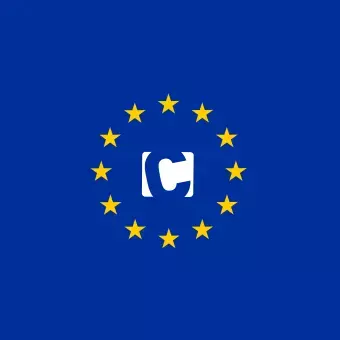Introduction
If you’re reading this article, chances are you’re using Contao for your website or considering it. And, like any responsible business owner, you’re thinking about GDPR, and what it means for you. Fortunately, Contao makes it easier than you might think to become GDPR compliant.
Why is GDPR Important for Business Owners?
If you’re based in the European Union or do business there, GDPR is more than a suggestion; it’s a requirement. Failing to comply can result in sizable fines; but complying with GDPR doesn’t just help you avoid penalties; it also shows your customers that you care about their privacy, which is a big plus in today’s digital age.
What Will This Article Cover?
We’ll start by giving you a quick rundown of what GDPR is and its key principles. Then, we’ll look at why Contao is a particularly good fit for GDPR compliance. We’ll also share some practical steps you can take to ensure your Contao website is GDPR-compliant, as well as common pitfalls to avoid. Finally, we’ll round things off with some useful tools within Contao that can make your GDPR journey smoother.
Looking for a Web Agency?
Understanding GDPR
What is GDPR?
GDPR stands for General Data Protection Regulation. It’s a regulation enacted by the European Union in 2018, designed to protect the personal data of EU citizens.
Despite being an EU regulation, the reach of GDPR is not confined to the borders of the EU. If you have customers in the EU or even just collect data from there – wherever you’re based – GDPR applies to you.
Key Principles
- Lawfulness, Fairness and Transparency: You must process personal data lawfully and transparently.
- Purpose Limitation: You should only collect data for a specific, explicit, and legitimate purpose.
- Data Minimisation: Collect only the data that is necessary for the intended purpose.
- Accuracy: Ensure the data you hold is accurate and up-to-date.
- Storage Limitation: Keep data only as long as necessary, after which it should either be deleted or anonymised.
- Integrity and Confidentiality: Also known as the “security principle,” this calls for robust security measures to protect the data.
- Accountability: You must be able to demonstrate compliance with all the above principles.
Understanding these principles is important, because all GDPR compliance efforts stem from them.
Practical Steps to Compliance in Contao
Contao has some features and functionalities that make it a strong choice for those aiming to be GDPR compliant. Here’s a breakdown:
- Data Portability: One of GDPR’s requirements is the right to data portability, allowing individuals to obtain and reuse their personal data. Contao makes it simple to export user data in a machine-readable format, which can be a major timesaver.
- Audit Logs: Contao’s logging capabilities are robust, allowing you to track who did what and when. This is especially useful for demonstrating accountability, one of the key principles of GDPR.
- Consent Management: Contao has an advanced system to manage user consent, which is essential for lawful data processing. You can easily set up opt-in or opt-out options for various types of data collection.
- User Permissions: Contao allows you to set specific roles and permissions for backend users. This ensures that only authorised personnel have access to sensitive data, adhering to the principle of “Integrity and Confidentiality.”
- Data Encryption: Contao supports strong encryption methods for storing user data. This is vital for both data security and GDPR compliance, as it helps safeguard against data breaches.
- Automated Data Cleanup: Contao can be configured to automatically delete or anonymise data that is no longer needed, aligning with the “Storage Limitation” principle of GDPR.
- Community-Driven GDPR Modules: There are GDPR-specific modules and extensions available for Contao. These can automate many of the manual tasks associated with GDPR compliance.
- Transparency Tools: Contao enables you to create transparent privacy policies and terms of service directly within the CMS. This aligns with the GDPR’s emphasis on transparent data processing and clear communication with data subjects.
Additional Resources
If you’re hungry for more information, or you’d like to dive deeper into the nitty-gritty details, here are some resources to help you along:
- Official GDPR Website: For the most accurate and detailed information, the official GDPR website is a must-visit. You’ll find the full text of the regulation, FAQs, and more.
- Contao Documentation: The official Contao documentation offers in-depth guides and tutorials, including specific sections on GDPR compliance.
- GDPR Compliance Checklists: Websites like GDPR.eu offer comprehensive checklists to help you ensure you’ve covered all your bases.
Community Forums: The Contao community forum is a goldmine of information, tips, and advice from other Contao users who are also navigating GDPR compliance.



